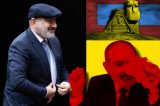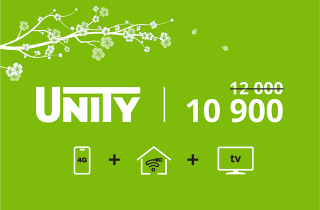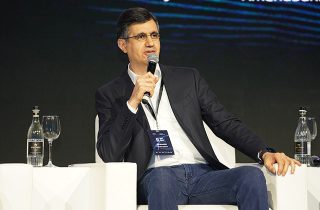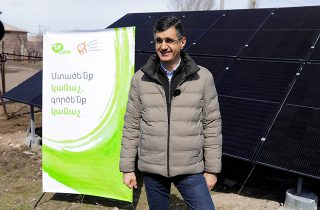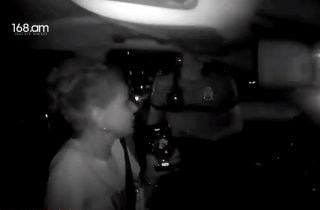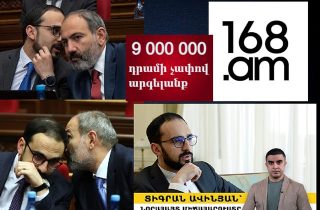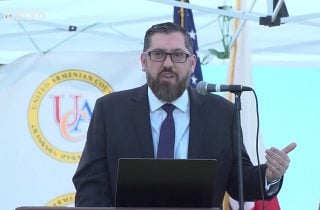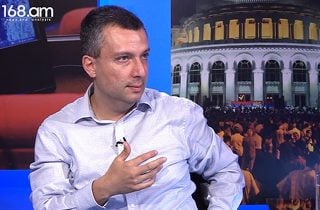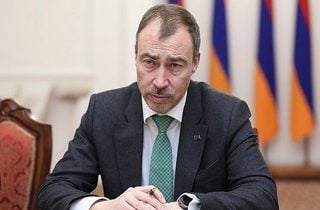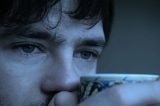Gyumri: “In a quarter century after the earthquake the horseshoe on the door has rusted out but luck does not visit us yet”
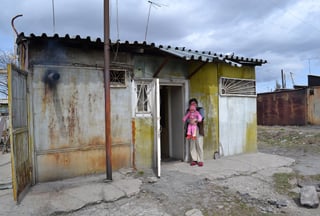
A quarter century has passed since the devastating earthquake in Gyumri on December 7, 1988, however, 4,300 families still live in the same makeshifts they went into following the earthquake.
When you walk through the makeshift area in Gyumri, you can’t stop asking whether it is possible to survive in such conditions. These people live in these conditions for more than a quarter century.
When passing by a small makeshift I noticed that it did not have a window. A lady came out of the makeshift and invited me in. As I walked in, Anahit pointed out at a small child and said that it was due to her grandchild that they were able to survive as the child gives them courage to survive. I was still thinking of the same question – is it possible to survive the cold winter in this small, unprotected metallic makeshift? I asked Anahit how they could live there without a window. “No! How is it possible to live without a window? We have one. You have to look at it from outside because I have closed it from inside to protect us from cold,” replied Anahit. I went around the makeshift and found the window Anahit was speaking about; it was covered up with different materials so tight to protect from cold that it was blocking light too.
People in Gyumri do not like complaining and they always show pride. Surprisingly even in these difficult social conditions these people like the life; they tend to the light, they still struggle and want to be happy.
Another woman, Aida, invited me in to tell her story. “My elder daughter is 16 year-old. Good people helped us, and now she is taking English language courses at a center not far from here. She is planning to study international relations; she wants to become a diplomat. My daughters study very well. Both of them are good in music and have certificates of appreciation. We live here for 26 years. In the beginning my brother used to live with us but he could not bear it anymore and left for Russia. He had no choice but to emigrate. What would he do here? After the earthquake I used to work as an accountant in a construction company. I have worked all my life; I have even been a culture house director. Now I am a third-level disabled as I had a leg surgery. I am not expecting financial support; what I want is a job. Even as a disabled person I am ready to work as much as possible to be able to feed my children,” said Aida Unusyan.
As you walk in the makeshift district you notice that in a quarter century after the earthquake even the makeshifts are rusted so much that soon they will collapse too, but the people of Gyumri do not give up and do not lose their hope. In every makeshift and every home I saw a corner with candles, crosses and pictures of Saints. As you look at the conditions they live in and the way they build such corners for pictures of Saints, you understand that it is their belief and hope that keeps them surviving for more than a quarter century.
In a half-ruined building there was a horseshoe hanging above a door in a dark corridor. I asked the lady that lived there with two children what was the horseshoe for. “It is believed that horseshoe brings luck but so many years have passed that this horseshoe is rusted out but luck does not visit us yet,” said the single mother.
When you look at all this, you cannot blame people for leaving their country and emigrating because there is a limit, beyond which all love and feelings to your fatherland disappear, and the only priority you have is your family and children – that is the instinct to survive, look for a secure place and not to starve.
There are half-ruined buildings out of the makeshift area, where you can see people living without any positive conditions for life. I saw something in a half-ruined building that I cannot forget. I saw a small child and a very thin hand on his head. Probably that was the hand of his mother or grandmother, who refused to go out of the room. Having a heart to malnutrition issues, especially among children, I cannot forget what I saw there. I saw things in this building that reminded me of pictures from the Genocide times – malnutrition, lack of hygiene, unwashed faces of children, eyes that do not show any sign of happiness, and children whose childhood happiness has been stolen. All this is happening next to us, in the 21st century, and we could make a change, but indeed we have failed to make a change during the past quarter century…
Vahan Tumasyan from Shirak Center NGO took us to the third floor of that building. As he started speaking, all doors on the floor opened and people went out to meet him. “Today I have not brought anything; this is an introduction visit,” replied Vahan immediately. People stepped back and hopelessly closed their doors. Our visit did not surprise anyone there; probably people visit them often to watch, see, and they leave.
While Vahan was introducing us to people, I was unable to concentrate and listen to him as it seemed to me that the whole building could collapse on my head at any time. We were walking through a narrow and dark corridor, which was slightly illuminated by thin daylight behind my shoulders. I turned back and saw that the light was coming in from the middle of the corridor as half of the building was collapsed. In several meters behind the stairs we used to walk on several minutes ago half of the building was collapsed, and there were huge cracks on the walls. Here people do not have any washrooms or other conditions for life. They bring water from a tap in a hundred meters distance. I made efforts to overcome my fright and approached the collapsed end of the building to take photos. On the right side I saw a room, which served as a toilette for the people in this half-ruined building.
I talked to several children and did not notice any spark of happiness in their eyes.
On the way back to Yerevan from Gyumri all of us in the car were silent. As we entered Yerevan, I saw a luxury car; for buying such a car in Armenia one needs several lives. My first reaction was calculating the price; that car was worth of 25 homes for families in Gyumri.
One month has passed since my visit to Gyumri but I still remember those children’s unwashed faces and eyes without happieness several times a day. Maybe it would be better for me not to go there, not to see and not to know all that, and live a better life. Maybe this would be better because thousands of people live next to them, look at these people but do not see (or do not want to see) what is happening there, and they still live a better life without bothering themselves with any feeling of compassion.
By Kamo Mailyan





